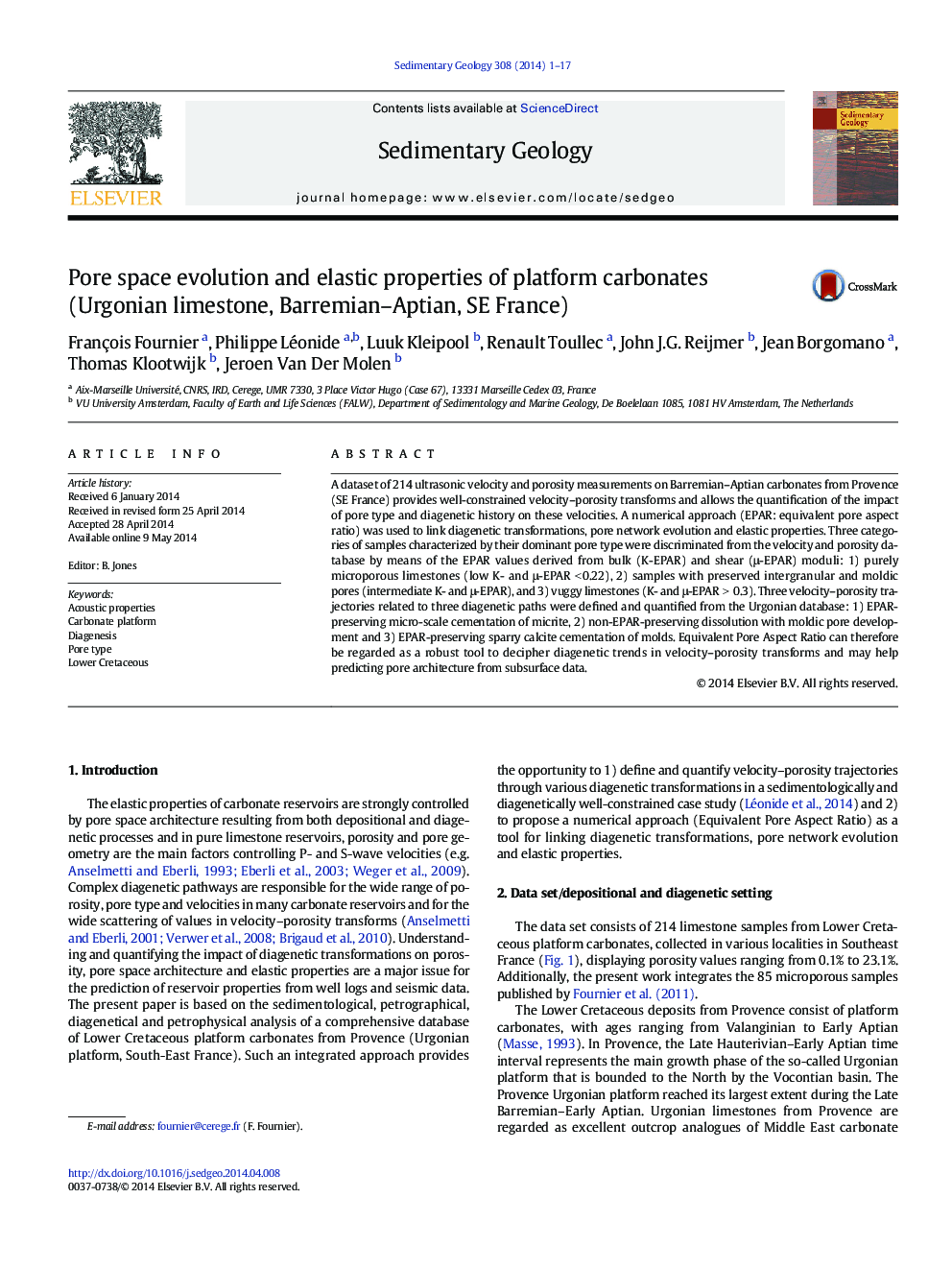| Article ID | Journal | Published Year | Pages | File Type |
|---|---|---|---|---|
| 4689426 | Sedimentary Geology | 2014 | 17 Pages |
A dataset of 214 ultrasonic velocity and porosity measurements on Barremian–Aptian carbonates from Provence (SE France) provides well-constrained velocity–porosity transforms and allows the quantification of the impact of pore type and diagenetic history on these velocities. A numerical approach (EPAR: equivalent pore aspect ratio) was used to link diagenetic transformations, pore network evolution and elastic properties. Three categories of samples characterized by their dominant pore type were discriminated from the velocity and porosity database by means of the EPAR values derived from bulk (K-EPAR) and shear (μ-EPAR) moduli: 1) purely microporous limestones (low K- and μ-EPAR < 0.22), 2) samples with preserved intergranular and moldic pores (intermediate K- and μ-EPAR), and 3) vuggy limestones (K- and μ-EPAR > 0.3). Three velocity–porosity trajectories related to three diagenetic paths were defined and quantified from the Urgonian database: 1) EPAR-preserving micro-scale cementation of micrite, 2) non-EPAR-preserving dissolution with moldic pore development and 3) EPAR-preserving sparry calcite cementation of molds. Equivalent Pore Aspect Ratio can therefore be regarded as a robust tool to decipher diagenetic trends in velocity–porosity transforms and may help predicting pore architecture from subsurface data.
